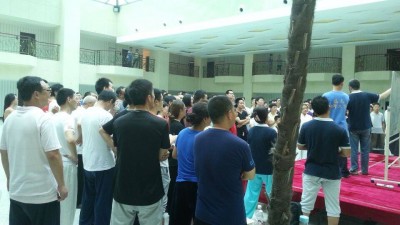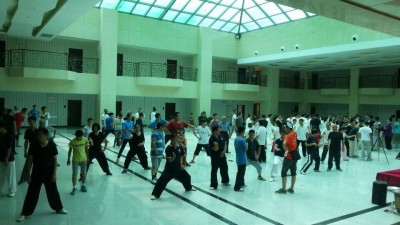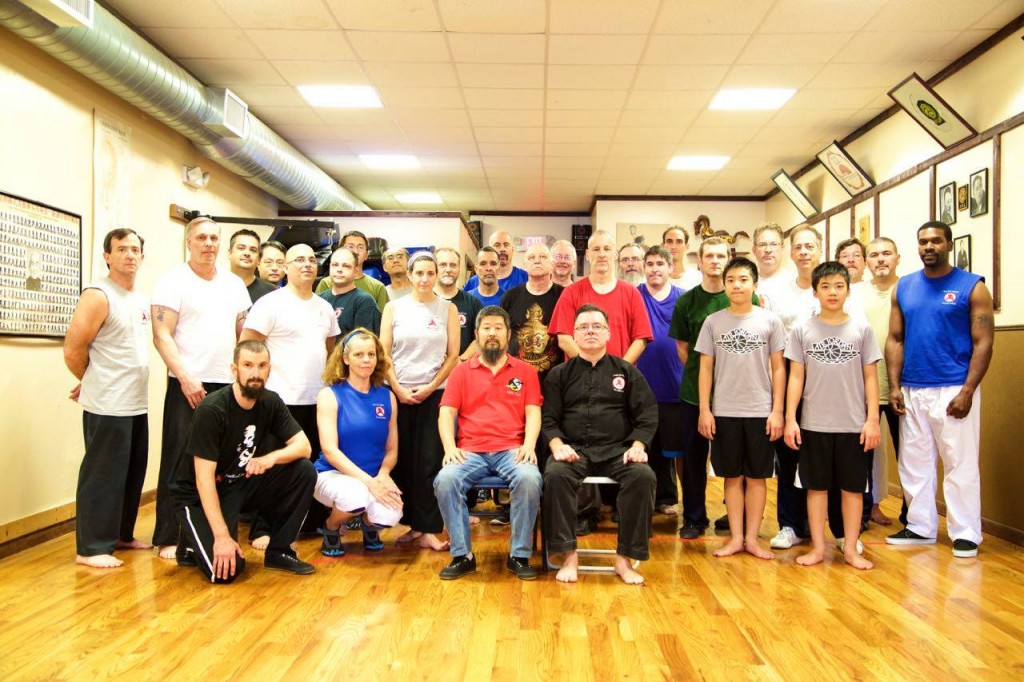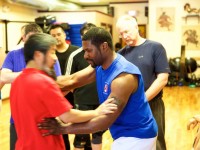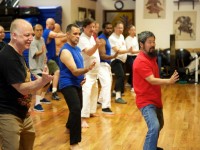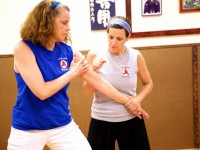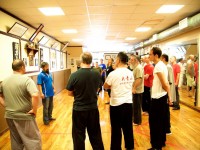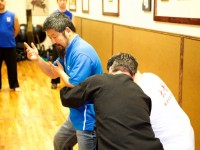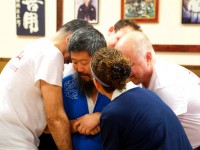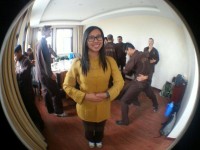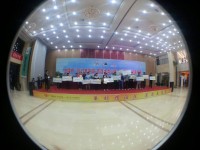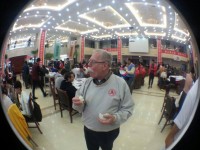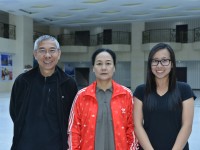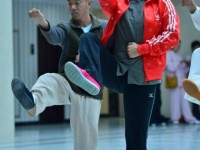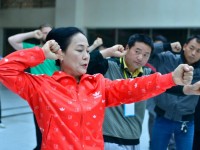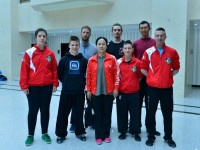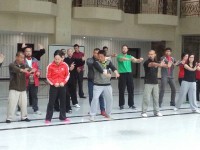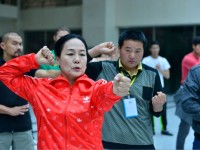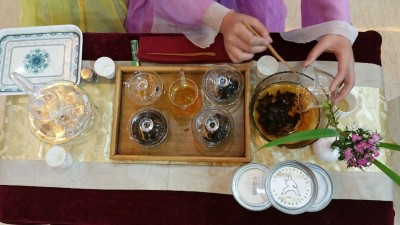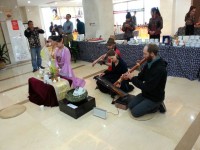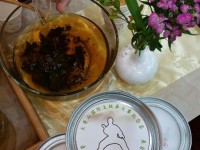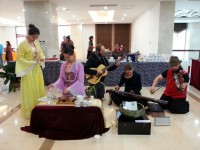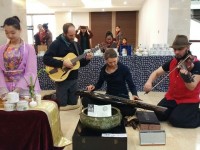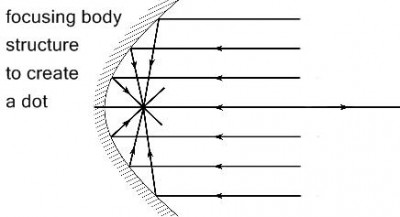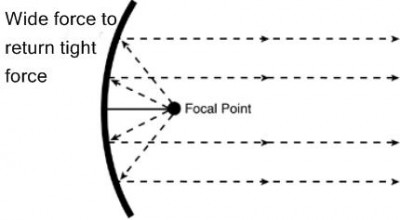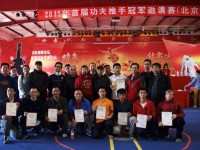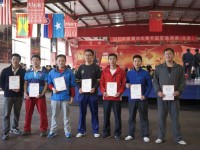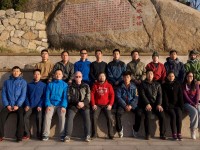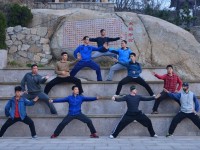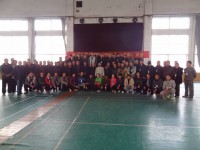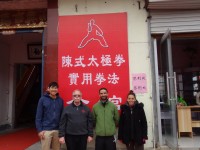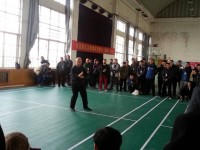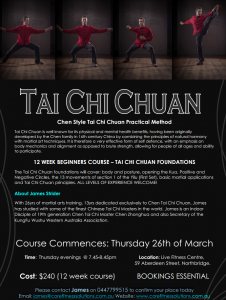News : Blog
You can follow Master Chen’s blogs here.
In numerous occasions, Master Chen talked about how to train the body as a gear box. In energy alignment, he talked about the hand and foot connection. In push hand, he instructed us not to push. Instead, push the leg and by opening the “kua” so that the energy is transmitted from foot to hand. He talked about “fill the kua”, “push the shoulder down”, “fix the two dots and hit the middle”, “indirect force/power”, etc. The words Master Chen used most in every workshop are “DON’T MOVE.” Master Chen’s teachings are like puzzle pieces in a box. We need to put these puzzles pieces together in order to see the larger picture of Practical Method. Read more
A summary of our extended stay 2015
After beeing in Daqingshan, Shandong Province in China for 4 month we are on our way back to Berlin now. We, that is me, my wife Sarah and little son Lukas, 2 1/2 years old. The first time I have been on the mountain in 2010, in 2012 Sarah did join and in 2014 the three of us have been here already once all together.
So here´s my summary from this stay: Read more
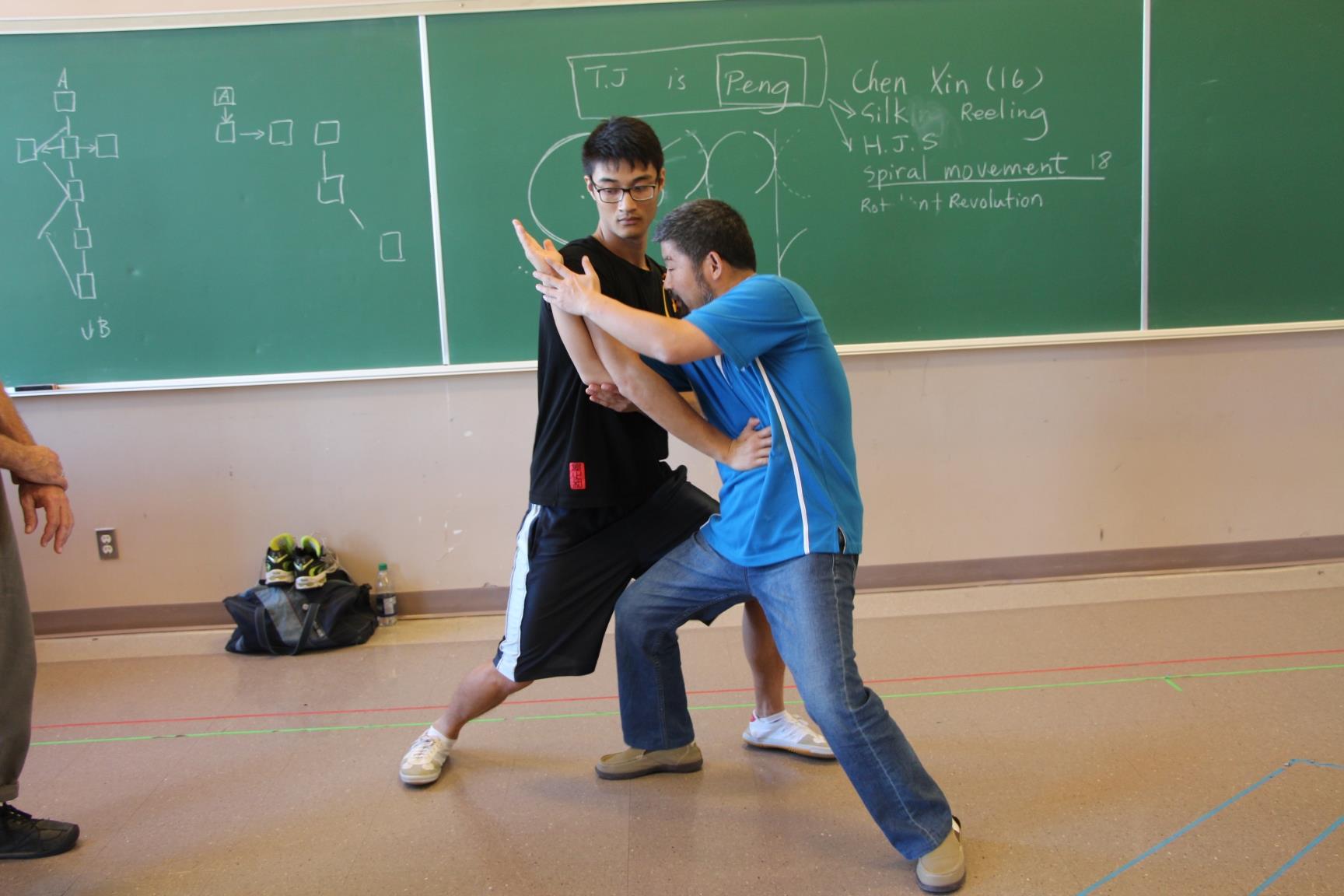 |
On yet another perfect autumn weekend in Ottawa, Master Chen guided his disciples and Taiji enthusiasts through the intricate art of Taijiquan. With meticulous planning, organizers Rachelle, Daniel, and James curated three days of intense training, immersing participants in Taiji history, philosophy, and the distinctive principles of the Practical Method.
A highlight of the workshop was an entire day dedicated to the hidden art of Pao Chui, offering attendees a rare opportunity to deepen their understanding. |
Special thanks to the dedicated students from Toronto and Montreal who made the long journey to experience hands-on training with Master Chen.
Read more
Step two in the learning process (following the observation) is “to copy”. Here on DQS the chinese guys nearly all do the positive circle like Chen Laoshi is doing them in his yilu from 2013. I was used to pull the elbow in as much as possible and changed that, after the observation, that they all are doing it differently. Some days ago, Chen Laoshi corrected my positive circle and I had to pull the elbow far more in.
The question for me is not, if the chinese guys are doing it right or wrong, because the outer appearance is variable uppon your level (as I understand), the question is HOW TO KNOW, WHAT TO COPY?
My conclusion is for now, not to copy anyone, except Chen Laoshi.
The problem is, that it was said, that we also have to learn from each other, but perhaps that is more related to pushand- and drillsituations.
What do you think?
 It is said that you can obtain an idea of the skill level of an instructor by the quality of his/her students. Not only by how they move and fight, but also who they are. These are all things that are a direct reflection to the lineage of a martial art with a focused and true path.
It is said that you can obtain an idea of the skill level of an instructor by the quality of his/her students. Not only by how they move and fight, but also who they are. These are all things that are a direct reflection to the lineage of a martial art with a focused and true path.
Master Chen asked me, shortly before accepting me as one of his disciples, if there was one point, or a moment where I noticed improvement in my practice. While at the time I did not recall such a defining moment, and was unable to provide an answer, I now realize it. For me, it was the moment I decided to trust. Simple really. I had trained martial arts for years in the past, with instructors of different philosophies, not all of which lead me toward my goals, in fact some personal derailment was a direct result of a particular lineages philosophies, others did me a world of good. For me, I needed a system that is consistent in its teachings, as well as consistent in its people. A system with a proven history that could also offer hope of future goals if I just followed the procedure, and truly opened myself to it.
Read more
Hello everybody,
I am thinking about starting a class in my town. The main reason is that there is no practical method close by and to get my own regular training. I don’t know the whole Yilu form. My experience with practical method is mostly from the video’s of master Chen and of the workshops he taught in the Netherlands. Futher I am an experienced Aikido teacher and P.E. teacher. So I do have a background.
I have a few questions:
Is it acceptable to start a class and teach as I don’t know the whole form?
How do you guys structure class?
What are good (extra) exercises besides the foundations? Are there good partner exercises?
Are the first 13 moves enough to start a class?
Thanks in advance,
Richard
New 10-week course
Starting Sept. 24 2015
Thursdays 5-6:30 pm
J.B. O’Keefe Centre
St. Thomas University
(Register on site)
Learn the fundamentals (jibengong), the first form ( Yilu ) and push hands (tuishou).
For more information, email: jphranger@gmail.com
 Since Aug, 1st we are here on Daqingshan for Fulltime Training with Master Chen and all fellow students and disciples. Below some more pictures of these days.
Since Aug, 1st we are here on Daqingshan for Fulltime Training with Master Chen and all fellow students and disciples. Below some more pictures of these days.
We had plenty of opportunities to improve our Taiji, there were lots of lessons with Master Chen, sceduled ones but also the “little things” in between – just as I was used to experience it on DQS. Very nice, that though the whole thing here is getting bigger, the main spirit did stay the same. Read more
Master Chen is still busy on Daqingshan, so the workshop will be taught by Bill and Steve.
From Stuart Shaw
photos by John Ho
Chen Xu in blue, 2nd round, video by Gawain Siu
Master Chen often talks about having concave curve in the body. It sounds to me like he is describing a parabolic reflector. It’s a concave mirror essentially that reflects energy, that comes in, back toward a single focal point. Parabolic structure is also used to reflect a point of light into a diffuse light.
In relation to Taiji training, Master CHen is talking about correct alignment and orientation of the joints of the body, and how often when we think we are in the ‘ correct ‘ position, we are actually quite chaotically misaligned, and lack proper orientation. There is no focal point.
My understanding of what he means is that in the correct structure of the ‘ mother move ‘ of Practical Method all the joints power should be aiming to a central dot. That dot will have cumulative power similar to the idea of the collective beam of concentrated energy from a Parabolic reflector.
In workshop Master Chen also demo about breaking opponent incoming diffuse force with a tight force and vice versa: the concave shape also facilitate this.
From Oblique Single Whip (44) to Single Whip (54), plus demonstration of the last two sections from Middle Cloud Hands (55) to Turn Left and Buddha’s Warrior Pounds Mortar (81).
Hi all, so this is my Yilu first section, basically learning it from video. Corrections, pointers etc very much appreciated. Only recently realized how good the form practice is to grind the principles.
Ping Wei will visit Irvine California and teach foundations and Yilu in a one day workshop on March 21, Saturday. This will be his third workshop in Irvine.
I picked up stage magic before I started learning Practical Method. One evening after a workshop session in Phoenix I was doing some sleight of hand to amuse the other attendees, and Master Chen spoke briefly about the difference between perception and reality as it applies to taiji. I’m including some thoughts I’ve had on the topic since. Read more
June 20, 2014 (?)
I’m not entirely sure if the date for these notes is correct. I believe they were from an evening class, but they may have been from a workshop. I should have posted these right away, but better late than never I suppose. Read more
12 WEEK BEGINNERS COURSE – TAI CHI CHUAN FOUNDATIONS
The Tai Chi Chuan foundations will cover: body and posture, opening the Kua, Positive and Negative Circles, the 13 movements of section 1 of the Yilu (First Set), basic martial applications and Tai Chi Chuan principles.
ALL LEVELS OF EXPERIENCE WELCOME!
Please contact James on 0447799515 to confirm your place today
Email: james@corefitnesssolutions.com.au
Website: corefitnessolutions.com.au
Master Chen’s disciple Ping Wei will teach Practical Method foundations and Yilu on January 31 (Saturday, 10am-1pm and 2-5pm) in Irvine, California. For location and other details, please contact Al Yu at 949-331-2735, or email: mralyu@yahoo.com.





